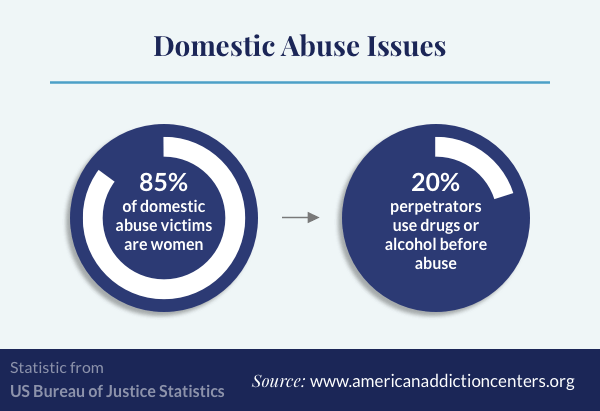"A study of 3 kinds of group psychotherapy with hospitalized male inebriates". 18 (2 ): 26377. PMID 13441877. Cartwright AK (December 1981). "Are various restorative point of views important in the treatment of alcohol addiction?". 76 (4 ): 34761. doi:10.1111/ j. 1360-0443.1981. tb03232.x. PMID 6947809. Department of Behavioral Health Solutions, ADHS/DBHS Finest Practice Advisory Committee. "Client Directed, Outcome-Informed Practice (CDOI)".
"A psychoanalytical theory of 'drug dependency': unconscious fantasies of homosexuality, compulsions and masturbation within the context of teratogenic procedures". Int J Psychoanal. 76 (Pt 6): 112142. PMID 8789164. Marlatt, G. Alan (1985 ). "Cognitive factors in the regression process". In Gordon, Judith R.; Marlatt, G. Alan (eds.). New York: Guilford Press.

Glavin, Chris (6 February 2014). "Cognitive Models of Dependency Healing K12 Academics". www.k12academics.com. Obtained 1 October 2018. Beck, Aaron T.; Wright, Fred D.; Newman, Cory F.; Liese, Bruce S. (16 January 2001). "Ch 11: Concentrate On Beliefs". Cognitive Therapy of Compound Abuse. Guilford Press. pp. 16986 - what is treatment in gambling addiction. ISBN 978-1-57230-659-2. Mendelson JH, Sholar MB, Goletiani N, Siegel AJ, Mello NK (September 2005).
Neuropsychopharmacology. 30 (9 ): 175163. doi:10.1038/ sj.npp. 1300753. PMC. PMID 15870834. Carmody TP, Vieten C, Astin JA (December 2007). "Unfavorable affect, psychological acceptance, and cigarette smoking cessation". J Psychedelic Drugs. 39 (4 ): 499508. doi:10.1080/ 02791072.2007.10399889. PMID 18303707. Ruiz, F. J. (2010 ). "An evaluation of Acceptance and Dedication Therapy (ACT) empirical evidence: Correlational, experimental psychopathology, element and result studies".
10 (1 ): 12562. Hayes, Steven. "State of the ACT Proof". ContextualPsychology.org. Black DS (April 2014). "Mindfulness-based interventions: a remedy to suffering in the context of substance usage, misuse, and addiction". Subst Usage Abuse. 49 (5 ): 48791. doi:10.3109/ 10826084.2014.860749. PMID 24611846. Chiesa A (April 2014). "Are mindfulness-based interventions effective for compound usage disorders? A methodical review of the proof".
49 (5 ): 492512. doi:10.3109/ 10826084.2013.770027. PMID 23461667. Garland EL (January 2014). "Mindfulness training targets neurocognitive mechanisms of dependency at the attention-appraisal-emotion interface". Front Psychiatry. 4 (173 ): 173. doi:10.3389/ fpsyt. 2013.00173. PMC. PMID 24454293. "Fatal overdoses, fraud pester Florida's thriving drug treatment industry". NBC News. Obtained 1 November 2017. Sforza, Teri; et al.
"How some Southern California drug rehab centers exploit dependency". ocregister.com. Ancyc, Tyra; et al. (10 March 2020). "Rehab in Thailand". thairehabhelper.com. Karasaki, et al. (2013 ). The Location of Volition in Addiction: Differing Approaches and their Implications for Policy and Service Arrangement. Kinsella, M. (2017 ). "Promoting client autonomy in dependency rehabilitative practice: The function of restorative 'existence'." Journal of Theoretical and Philosophical Psychology, 37( 2 ), 91108.

The Single Strategy To Use For What Is Evidence Based Treatment For Addiction
Table of Contents Drug abuse treatment prepares not only help addicts detoxify in a safe environment however also help them through all stages of the recovery procedure. In 2015, the Drug Abuse and Mental Health Services Administration (SAMHSA) approximated that almost 22 million people a minimum of 12 years of age required drug abuse treatment. No single definition of treatment exists, and no basic terms explains various measurements and aspects of treatment. Describing a center as providing inpatient care or ambulatory services identifies just one element (albeit an important one): the setting. Furthermore, the specialized compound abuse treatment system varies around the country, with each State or city having its own peculiarities and specialties. what is the treatment for opioid addiction.
California likewise uses a number of community-based social model public sector programs that emphasize a 12-Step, self-help approach as a foundation for life-long healing (where are the internet addiction treatment camps). In this chapter, the term treatment will be restricted to explaining the formal programs that serve patients with more serious alcohol and other drug problems who do not react to quick interventions or other office-based management strategies.
In most communities, a public or private agency regularly compiles a directory of compound abuse treatment facilities that supplies beneficial information about program services (e.g., type, place, hours, and accessibility to mass transit), eligibility requirements, cost, and staff complement and certifications, including language efficiency. This directory site may be produced by the regional health department, a council on alcohol addiction and drug abuse, a social services company, or volunteers in recovery.
Another resource is the National Council on Alcohol and Substance Abuse, which supplies both assessment or referral for a sliding scale fee and disperses totally free information on treatment facilities nationally. Also, the Drug Abuse and Mental Health Solutions Administration disperses a National Directory of Substance Abuse and Alcoholism Treatment and Avoidance Programs (1-800-729-6686). Knowing the resources and a contact individual within each will facilitate access to the system.
Resources also ought to consist of self-help groups in the location. While each person in treatment will have specific long- and short-term goals, all specialized drug abuse treatment programs have actually 3 comparable generalized objectives (Schuckit, 1994; Decreasing substance abuse or achieving a substance-free lifeMaximizing multiple aspects of life functioningPreventing or lowering the frequency and intensity of relapse For many clients, the main goal of treatment is achievement and maintenance of https://postheaven.net/voadilu3mp/after-this-limit-is-reached-additional-treatment-can-produce-further abstaining (with the exception of methadone-maintained patients), but this may take various efforts and failures at "regulated" usage before sufficient motivation is activated.
Becoming alcohol- or drug-free, however, is just a beginning. Many clients in substance abuse treatment have several and complicated problems in lots of elements of living, including medical and mental health problems, interfered with relationships, underdeveloped or deteriorated social and vocational abilities, impaired efficiency at work or in school, and legal or financial problems.
Significant efforts must be made by treatment programs to help patients in ameliorating these problems so that they can assume proper and accountable functions in society. This requires maximizing physical health, dealing with independent psychiatric conditions, improving psychological functioning, dealing with marital or other household and relationship problems, resolving financial and legal issues, and enhancing or establishing necessary instructional and professional abilities.
The Buzz on How Sextual Addiction Treatment Fails When Working With Gay And Bisectual People
Increasingly, treatment programs are also preparing patients for the possibility of relapse and helping them understand and prevent harmful "triggers" of resumed drinking or substance abuse. Clients are taught how to recognize cues, how to manage yearning, how to establish contingency prepare for dealing with demanding circumstances, and what to do if there is a "slip." Regression avoidance is particularly crucial as a treatment objective in an age of reduced formal, intensive intervention and more emphasis on aftercare following discharge.
All the long-lasting studies discover that "treatment works"-- the bulk of substance-dependent patients eventually stop compulsive use and have less regular and serious regression episodes ( American Psychiatric Association, 1995; Landry, 1996). The most positive impacts normally take place while the client is actively getting involved in treatment, but extended abstinence following treatment is an excellent predictor of continuing success.
Continuing involvement in aftercare or self-help groups following treatment also seems related to success ( American Psychiatric Association, 1995). An increasing variety of randomized scientific trials and other result studies have been undertaken in the last few years to take a look at the effectiveness of alcohol and various types of drug abuse treatment.
Nevertheless, a few summary declarations from an Institute of Medicine report on alcohol studies are pertinent: No single treatment technique works for all individuals with alcohol issues, and there is no overall advantage for domestic or inpatient treatment over outpatient care. Treatment of other life issues connected with drinking enhances outcomes.
Clients who considerably minimize alcohol usage or become completely abstinent generally enhance their functioning in other locations ( Institute of Medicine, 1990). A current comparison of treatment compliance and regression rates for patients in treatment for opiate, cocaine, and nicotine dependence with results for three typical and chronic medical conditions (i.e., hypertension, asthma, and diabetes) discovered similar action rates throughout the addicting and persistent medical disorders ( National Institute on Substance Abuse, 1996). All of these conditions need behavioral modification and medication compliance for successful treatment.
Crucial differences in language continue between public and economic sector programs and, to a lower extent, in treatment efforts originally developed and targeted to individuals with alcohol- as opposed to illicit drug-related problems. Programs are progressively attempting to meet individual requirements and to tailor the program to the clients instead of having a single standard format with a fixed length of stay or series of specified services.
These services can be used for varying lengths of time and provided at differing strengths. Another important measurement is treatment stage, due to the fact that various resources may be targeted at different stages along a continuum of healing. Programs likewise have been developed to serve special populations-- by age, gender, racial and ethnic orientation, drug of option, and practical level or medical condition.
The Single Strategy To Use For What Is Effective For Aftercare Treatment After Addiction Treatment
Historically, treatment programs were established to show the philosophical orientations of founders and their beliefs regarding the etiology of alcoholism and substance abuse. Although a lot of programs now incorporate the following 3 techniques, a quick evaluation of earlier distinctions will help main care clinicians comprehend what precursors may endure or dominate amongst programs.
A psychological design, concentrating on a person's maladaptive motivational knowing or psychological dysfunction as the primary reason for compound abuse. This method consists of psychiatric therapy or behavior modification directed by a psychological health expert. A sociocultural model, worrying deficiencies in the social and cultural scene or socialization process that can be ameliorated by altering the physical and social environment, particularly through involvement in self-help fellowships or spiritual activities and encouraging social networks.
These three models have been woven into a biopsychosocial approach in the majority of contemporary programs. The 4 major treatment methods now widespread in public and private programs are The Minnesota design of property chemical dependence treatment includes a biopsychosocial illness model of addiction that concentrates on abstaining as the main treatment goal and utilizes the AA 12-Step program as a significant tool for healing and relapse prevention.